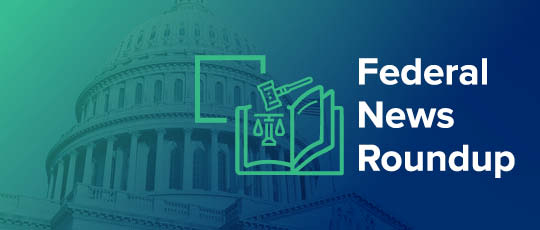For WorldatWork Members
- Financial Reporting 101 for Total Rewards Pros, Workspan Daily Plus+ article
- Wellness Woes: Why Aren’t Employees Using Your Benefits? Workspan Daily Plus+ article
- Health Insurance Selection Checklist for Employees, Workspan Daily Plus+ article
- Anatomy of a Wellness Program: Ensuring Regulatory Compliance, Workspan Daily Plus+ article
For Everyone
- Employers Facing Healthcare Cost Containment Challenge for 2025, Workspan Daily article
- Employer Healthcare Costs Projected to Hit 10-Year High in 2025, Workspan Daily article
- Employers Showing ‘Growing Appetite for Disruptive’ Benefits Solutions, Workspan Daily article
- As Health Costs Spike, Total Rewards and CFO Collaboration Is Crucial, Workspan Daily article
- Employers Look to Balance Rising Health Costs, Benefit Upgrades in 2025, Workspan Daily article
- The Future of Direct Care in Employee Benefits, on-demand webinar
Healthcare costs in 2026 are expected to continue to trend upward within employer-provided coverage plans, according to recent reports from consulting firms PwC and Mercer. And, as in years past, the primary employer challenge will be how to best mitigate those expected higher costs.
For instance, PwC reported in a recent survey that the overall increase in the cost of healthcare, or the “medical cost trend,” may be around 8.5% or higher for 2026. Medical cost trend is a metric that shows how much a health plan’s medical claim costs would change if it kept its plan design the same. The projection is similar to what PwC analysts have seen for the U.S. group health market so far for 2025.
PwC also noted that one force that could increase employers’ health plan costs are looming federal spending cuts to Medicaid and Affordable Care Act (ACA) subsidies as a result of the recently signed H.R. 1 (also known as the “One Big Beautiful Bill Act”).
In its survey, Mercer found that as health plan costs continue to increase, more employers intend to change or reduce their 2026 benefit offerings to control spending.
For example, 51% of respondents said they’re “likely” or “very likely” to make plan changes that would shift more costs to employees, such as raising deductibles or out-of-pocket maximums. The percentage increased from 45% in 2024.
What’s Driving the Spike?
Derek Skoog, PwC’s health actuarial and economics leader, explained that as the 2026 medical cost trend is projected to remain at 8.5% for the group market, it signals a sustained period of elevated healthcare inflation. This scenario, he added, is driven by three key factors: rising provider costs, continued demand for high-cost drugs like glucagon-like peptide-1 (GLP-1) and increased behavioral health utilization.
“For TR [total rewards] professionals, this environment requires more than tactical adjustments — it calls for strategic planning that factors in these long-term inflationary pressures,” Skoog said. “Employer-sponsored plans may face higher premiums, narrower networks, or more potential cost-shifting from providers responding to declining federal reimbursements and policy changes such as the expiration of ACA subsidies.”
Skoog said TR teams will need to anticipate these pressures when budgeting and negotiating renewals, especially around pharmacy and behavioral health benefits. Managing rising drug costs — particularly from GLP-1 usage and utilization of newly approved gene and ribonucleic acid (RNA) therapies — will likely involve rethinking formulary strategies and risk management structures. At the same time, he noted, behavioral health demand is surging, and benefit design likely needs to balance cost with access.
“The year ahead will test TR leaders’ ability to manage complexity while keeping their organizations competitive and responsive to employee needs,” Skoog said.
“Ultimately, total rewards strategies in 2026 will hinge on balancing fiscal responsibility with workforce engagement, using innovation and data to drive better health and value.”
— Derek Skoog, health actuarial and economics leader, PwC
What Are Employers’ Plans for 2026?
According to Skoog, to brace for 2026, employers are expected to shift toward smarter, more employee-centric benefit strategies that offer greater transparency and cost predictability. New consumer-directed plans that eliminate deductibles in favor of fixed copayments are gaining traction, he added, and will appeal to employees while helping employers manage cost volatility.
“At the same time, there’s increasing focus on integrated behavioral health programs, digital care solutions and pharmacy strategies that link high-cost medications like GLP-1s to wraparound services for better outcomes and adherence,” he said. “Ultimately, total rewards strategies in 2026 will hinge on balancing fiscal responsibility with workforce engagement, using innovation and data to drive better health and value.”
An Enhanced Focus on Value and Results
Ed Lehman, the leader of U.S. health and benefits at Mercer, explained that as healthcare costs continue to rise, TR professionals should prioritize their budget on initiatives that truly resonate with their workforces and deliver proper return on investment.
“This reflects a shift from broad PPO [preferred provider organization] plans to targeted, outcome-based models that emphasize value and results over access alone,” he said, adding that Mercer is seeing employers increasingly demand programs that reflect value-based care and enable the delivery of real, measurable results.
According to Lehman, healthcare affordability is at the center of most of the firm’s client conversations, and it is seeing a shift in focus from “volume to value” — empowering employers to pay for results, not just services.
“Our research shows a third of large employers [35%] are utilizing alternative networks today or will in 2026 that aim to deliver health outcomes with cost savings, including high-performance networks (HPNs), variable copay plans, reference-based pricing and/or network optimization strategies,” Lehman said.
“By disrupting the status quo, employers can pave the way to a higher-quality, more affordable and sustainable healthcare system.”
— Ellen Kelsay, president and CEO, Business Group on Health
‘A Pressure-Cooker Environment’
Ellen Kelsay, the president and CEO of Business Group on Health (a non-profit organization representing large employers’ perspectives on health policy issues), explained that for the second straight year, it is seeing cost increases reach historic levels. She said the trend is driven by both prescription drug spending — largely, but not solely, by the expanded use of those GLP-1s — as well as by costly and increasingly prevalent conditions such as cancer, musculoskeletal disorders, diabetes, cardiovascular issues and mental health concerns.
“These trend numbers show no sign of abating,” she said.
Kelsay explained that with additional challenges related to provider reimbursements and budget compression in the public markets (i.e., ACA, Medicare, Medicaid), and anticipated cost shifting, the employer-sponsored market will likely continue to be impacted.
These dynamics, she added, create “a pressure-cooker environment,” and employers will need to balance myriad demands that include cost-mitigation efforts, pursuing quality within health plan and vendor offerings, and managing employee expectations — all while maintaining a competitive yet comprehensive health and benefit plan for their workforces.
“Employers also will need to address cost challenges in the near term, while making longer-term strategic moves that are bold,” Kelsay said. “These bold moves, which may entail some degree of disruption, are not necessarily negative for employees. Rather, by disrupting the status quo, employers can pave the way to a higher-quality, more affordable and sustainable healthcare system.”
Editor’s Note: Additional Content
For more information and resources related to this article, see the pages below, which offer quick access to all WorldatWork content on these topics:
#1 Total Rewards & Comp Newsletter
Subscribe to Workspan Weekly and always get the latest news on compensation and Total Rewards delivered directly to you. Never miss another update on the newest regulations, court decisions, state laws and trends in the field.








